The Eastern Diamondback rattlesnake (Crotalus adamanteus) is a creature that inspires both fear and fascination. As North America’s largest venomous snake, this remarkable reptile has adapted perfectly to its environment through millions of years of evolution. From its distinctive diamond pattern to its infamous rattle, this serpent holds many secrets that go far beyond its fearsome reputation. Join us as we explore fourteen fascinating facts about this misunderstood predator that plays a crucial role in maintaining ecological balance in its native habitats across the southeastern United States.
The Largest Venomous Snake in North America

The Eastern Diamondback rattlesnake holds the distinction of being North America’s largest venomous snake, with average adults measuring between 3.5 to 5.5 feet in length. However, exceptional specimens have been documented reaching lengths of over 7 feet. The largest reliably measured Eastern Diamondback was 8 feet long, though historical accounts claim even larger individuals existed before widespread hunting reduced their numbers.
These impressive reptiles are also quite heavy, typically weighing between 4 to 10 pounds, with the largest individuals tipping the scales at up to 15 pounds. Their substantial size makes them formidable predators capable of taking down relatively large prey, including rabbits and even adult squirrels. This impressive stature also contributes to their ability to deliver larger quantities of venom than smaller venomous snakes, making them particularly dangerous to potential threats.
Distinctive Diamond Pattern

The Eastern Diamondback gets its name from the striking pattern of diamond-shaped markings that run along its back. These diamonds are dark brown to black in color with lighter centers and are outlined by bright yellow or cream-colored scales that create a highly contrasting effect. This distinctive pattern serves as perfect camouflage in their natural habitat of pine forests and palmetto thickets, helping them blend into the dappled light and shadow on the forest floor.
Each snake’s pattern is slightly different, similar to a fingerprint, making individual identification possible for researchers who study these animals. The diamond pattern extends from just behind the head all the way to the tail, becoming less distinct as it approaches the rattle. This iconic pattern has made the Eastern Diamondback one of the most recognizable snakes in North America and a symbol of the American Southeast’s wild places.
Potent Venom Capabilities
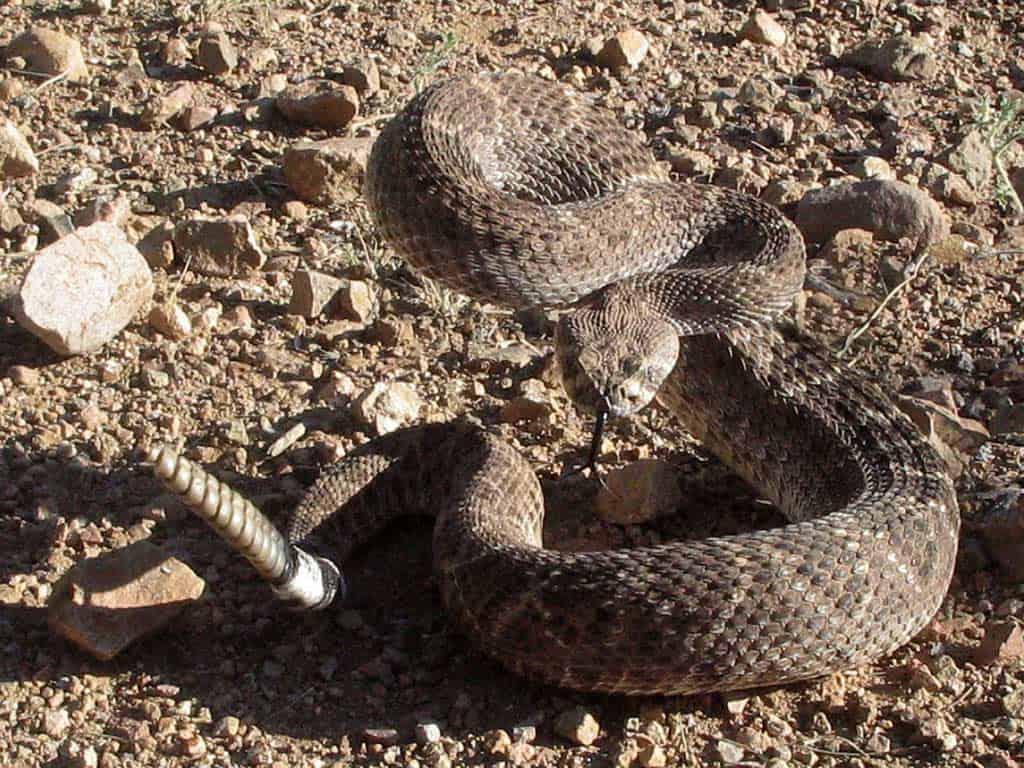
Eastern Diamondbacks possess some of the most potent venom of any North American snake, consisting primarily of hemotoxins that destroy tissue and disrupt blood clotting. A single bite can deliver an average of 400-450 mg of venom, with the lethal dose for humans estimated at around 100-150 mg. This means that without prompt medical attention, an Eastern Diamondback bite has the potential to be fatal, though modern antivenom treatment has significantly reduced mortality rates.
Interestingly, their venom has medical applications that scientists continue to research. Compounds isolated from rattlesnake venom have contributed to the development of medications for treating hypertension, blood clots, and certain cancers. The protein disintegrins found in their venom are particularly valuable for medical research as they can prevent blood platelets from clumping together, potentially leading to new treatments for heart attacks and strokes.
The Famous Rattling Warning System

Perhaps the most iconic feature of the Eastern Diamondback is its namesake rattle, composed of interlocking segments of keratin (the same protein found in human fingernails). Each time the snake sheds its skin, which occurs several times throughout its life, a new segment is added to the rattle. Contrary to popular belief, you cannot determine a rattlesnake’s age by counting the segments, as rattles frequently break off in the wild, and shedding frequency varies based on food availability and growth rate.
When threatened, the snake vibrates these segments against each other at speeds of up to 50 times per second, creating the distinctive buzzing sound that serves as a warning to potential predators. This rattling is a defensive behavior rather than an aggressive one—the snake is essentially saying, “I’m here, please don’t step on me.” This advanced warning system benefits both the snake and larger animals (including humans) by helping to prevent accidental encounters that could result in a defensive bite.
Heat-Sensing Facial Pits

Like all pit vipers, Eastern Diamondbacks possess specialized heat-sensing organs called loreal pits located between their eyes and nostrils. These remarkable structures can detect temperature differences as small as 0.003°C and allow the snake to create a thermal image of its surroundings. This adaptation essentially gives the snake infrared vision, enabling it to detect warm-blooded prey even in complete darkness or when the prey is hidden from sight.
The information from these heat sensors is processed in the snake’s brain alongside visual information, creating a comprehensive picture of the environment. This sophisticated system helps the Eastern Diamondback hunt with precision, striking accurately at vital areas of prey animals. The facial pits also assist in thermoregulation by helping the snake find optimal basking spots with ideal temperatures, a critical ability for a cold-blooded animal that relies on external heat sources to regulate its body temperature.
Declining Population Status

Despite their fearsome reputation, Eastern Diamondback rattlesnakes face significant population challenges. Their numbers have declined by an estimated 80% since European settlement of North America, primarily due to habitat loss and deliberate killing. As agricultural land, urban developments, and pine plantations have replaced their native longleaf pine ecosystems, suitable habitat has fragmented and disappeared throughout much of their historical range.
This species is currently listed as “Least Concern” on the IUCN Red List, but many herpetologists believe this classification underestimates the threats they face. Some states like North Carolina now list them as endangered at the state level. Conservation efforts include habitat restoration projects focusing on longleaf pine ecosystems, educational programs to reduce intentional killing, and in some areas, legal protections against harvesting. Without these interventions, this iconic American reptile could face extinction in parts of its range within coming decades.
Hunting and Feeding Behaviors

Eastern Diamondbacks are ambush predators that typically hunt by remaining motionless in a coiled position, waiting for prey to come within striking distance. Their primary food sources include rabbits, squirrels, rats, mice, and occasionally birds. Using their heat-sensing pits, they can detect warm-blooded prey even in complete darkness or when the animal is concealed in vegetation. When a suitable prey animal approaches, the snake strikes with lightning speed—up to 175 miles per hour—injecting venom through hollow, retractable fangs.
After striking, the Eastern Diamondback typically releases its prey rather than holding on, then tracks the dying animal using its excellent sense of smell by flicking its forked tongue to collect scent particles. This strategy keeps the snake safe from injury by struggling prey. Once the venom has taken effect and the prey has died, the snake will consume it whole, beginning with the head. Adult Eastern Diamondbacks can consume prey weighing up to one-third of their body weight and may only need to feed once every two to three weeks due to their slow metabolism.
Reproductive Cycle and Maternal Care
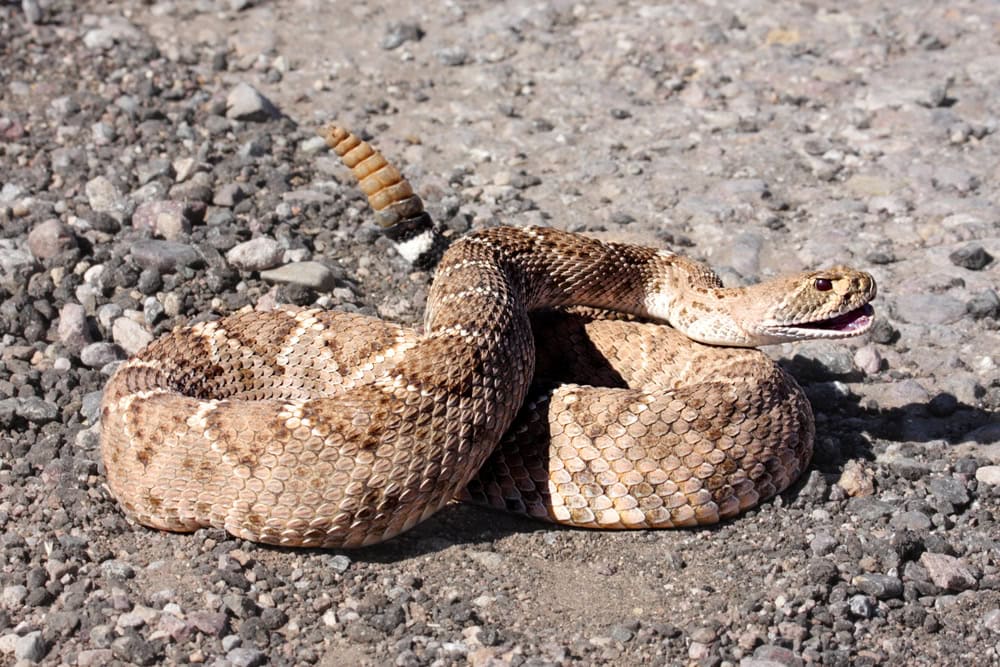
Eastern Diamondbacks are ovoviviparous, meaning females retain fertilized eggs inside their bodies until the young are ready to be born. Mating typically occurs in late summer or early fall, with males engaging in “combat dances” where they intertwine their bodies and attempt to pin each other down to win breeding rights with females. After mating, the female stores the sperm over winter and ovulation occurs in spring, with gestation lasting approximately seven months.
A female Eastern Diamondback gives birth to 7-21 live young, typically in late summer or early fall. The young are born fully equipped with functional fangs and venom, measuring about 12-14 inches long. Unlike many reptiles, female Eastern Diamondbacks show a degree of maternal care, staying with their offspring for up to two weeks after birth. This behavior protects the vulnerable young snakes from predators during their first days of life. After this brief period of protection, the young disperse and must fend for themselves, with only about 20% surviving to adulthood.
Impressive Lifespan

In the wild, Eastern Diamondbacks typically live between 10 and 20 years, though documented cases exist of individuals surviving for up to 25 years. In captivity, where they’re protected from predators and have access to regular healthcare, they can live even longer, with records of specimens reaching 30+ years. This relatively long lifespan for a reptile allows them to reproduce multiple times throughout their lives, which partially compensates for their slow reproductive rate and high juvenile mortality.
As Eastern Diamondbacks age, they continue to grow, albeit at a progressively slower rate. The largest specimens are invariably older individuals who have survived long enough to reach their impressive dimensions. Their longevity also means they can accumulate significant amounts of environmental toxins through their diet, particularly heavy metals, making them potential bioindicators for environmental pollution in their habitats. Scientists can study tissue samples from these long-lived predators to monitor ecosystem health over extended periods.
Cultural Significance

The Eastern Diamondback rattlesnake has played a significant role in American culture, particularly in the Southeast. Native American tribes such as the Creek and Seminole considered the rattlesnake a powerful symbol, incorporating its distinctive diamond pattern into their art and ceremonial clothing. The rattlesnake also featured prominently in early American symbolism, most famously in the Gadsden flag with its “Don’t Tread On Me” motto and coiled rattlesnake image, which has become an enduring symbol of American independence and resistance to tyranny.
Today, the Eastern Diamondback continues to hold cultural significance, appearing in regional art, literature, and even as mascots for sports teams. Unfortunately, this cultural prominence has also led to their exploitation in rattlesnake roundups, controversial events where snakes are captured from the wild and killed for entertainment, meat, and skins. These events, while declining in number due to conservation concerns, remain contentious points of debate between traditional cultural practices and modern conservation ethics. Many communities have transformed these events into wildlife appreciation festivals that celebrate rattlesnakes without harming them.
Unique Locomotion Methods
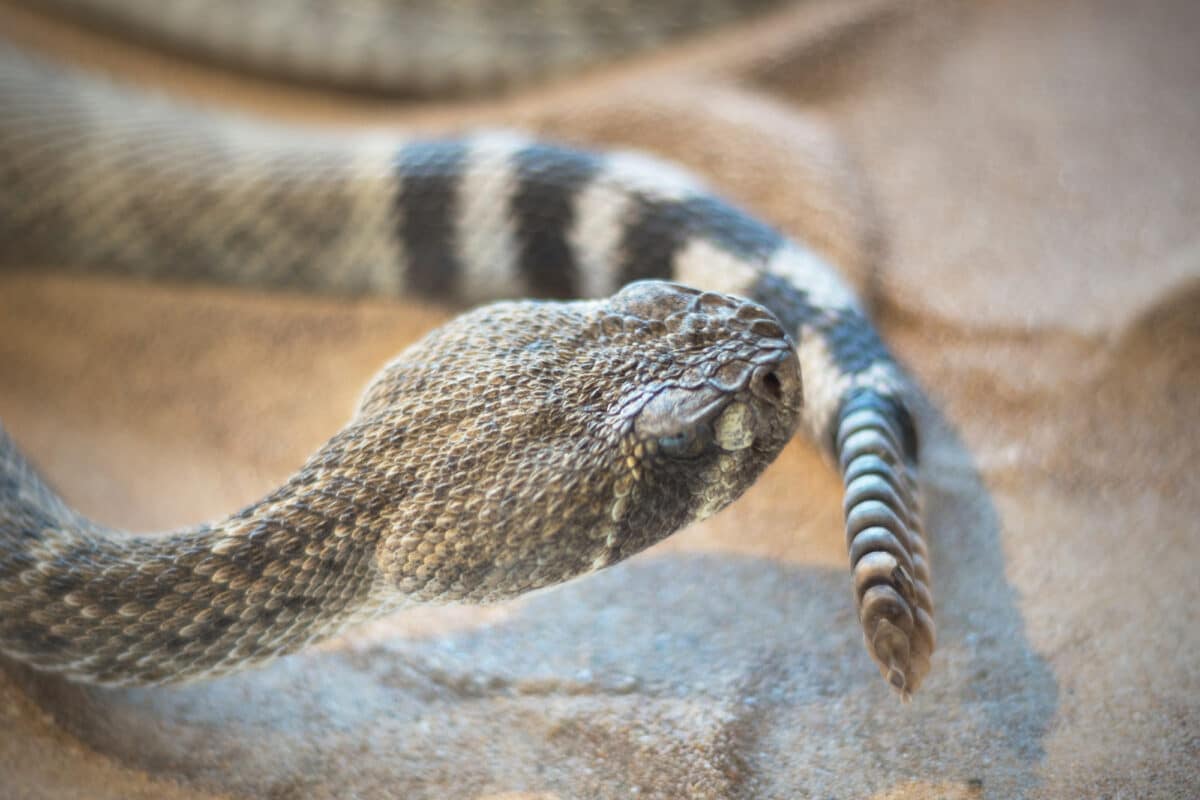
Eastern Diamondbacks employ several distinct methods of movement depending on their needs and the terrain. Their primary mode of locomotion is lateral undulation, the classic serpentine movement where the body forms S-shaped curves that push against ground irregularities to propel the snake forward. However, when moving across loose substrates like sand where finding purchase is difficult, they may switch to rectilinear movement—a straight-line crawling motion using their belly scales like tiny feet to grip the ground.
Perhaps most fascinating is their sidewinding capability, used primarily on very loose or slippery surfaces. During sidewinding, the snake moves in a diagonal fashion with only small portions of its body touching the ground at any given time, leaving a distinctive J-shaped track. This adaptation allows Eastern Diamondbacks to move efficiently across challenging terrain such as sand dunes or mud flats in coastal areas of their range. Despite their bulky appearance, these snakes can move surprisingly quickly when necessary, reaching speeds of up to 3-4 miles per hour in short bursts when fleeing danger.
Ecological Importance
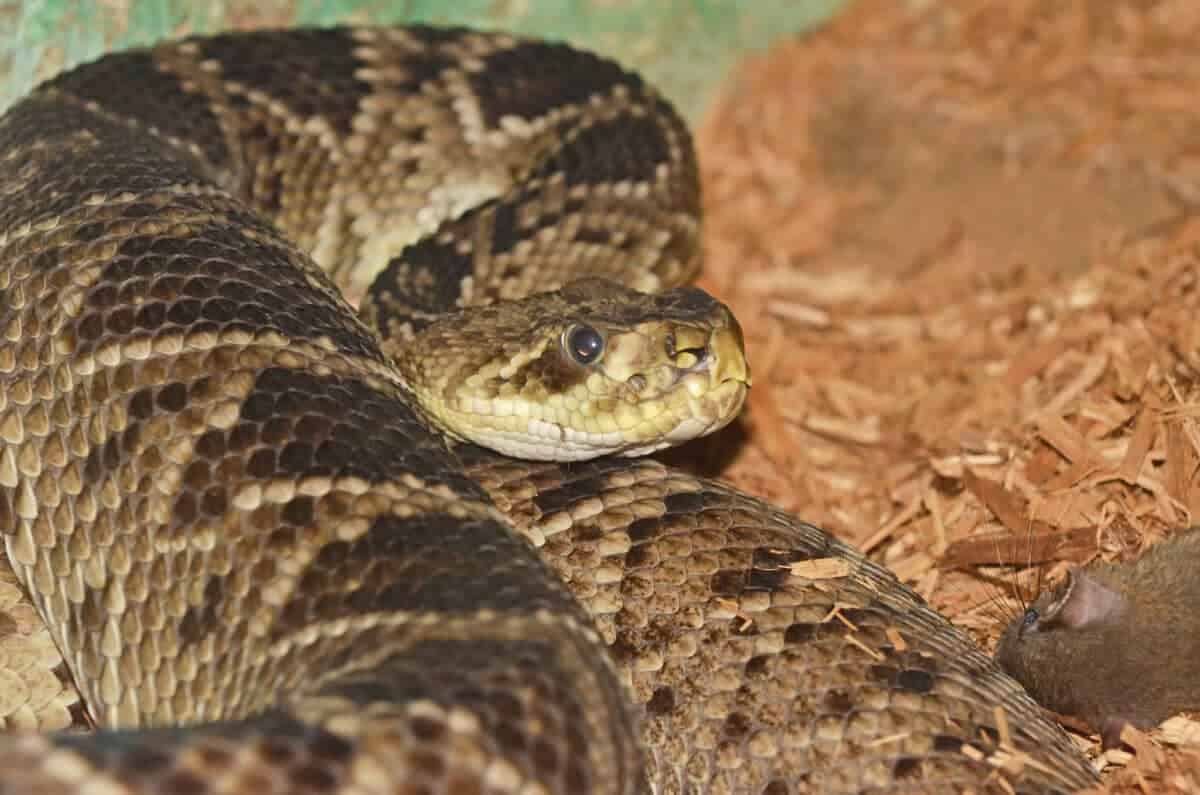
Eastern Diamondbacks play a crucial role in their ecosystem as both predator and prey. As efficient hunters of rodents, they help control populations of mice, rats, and other small mammals that might otherwise experience population explosions and damage vegetation through overgrazing. A single Eastern Diamondback can consume dozens of rodents annually, providing natural pest control services that benefit both forest ecosystems and adjacent agricultural areas. Their presence helps maintain the complex food web of their native longleaf pine ecosystems.
Despite their venomous nature, Eastern Diamondbacks themselves serve as food for several predators, including king snakes, indigo snakes, hawks, eagles, and feral pigs. Young diamondbacks face even more threats, with approximately 80% falling victim to predation before reaching maturity. Additionally, the abandoned burrows that Eastern Diamondbacks often use for shelter may later serve as homes for other wildlife, creating microhabitats that increase local biodiversity. This ecological significance makes their conservation important not just for the species itself but for the health of entire ecosystems.
Hibernation and Brumation Behaviors

Unlike true hibernation, Eastern Diamondbacks undergo a period of reduced activity called brumation during the winter months. During this time, their metabolism slows dramatically, but they don’t enter the deep sleep characteristic of mammalian hibernation. In the northern parts of their range, where winters are colder, these snakes may gather in communal dens called hibernacula, often using gopher tortoise burrows, stump holes, or rock crevices that extend below the frost line. These shared winter refuges sometimes contain multiple snake species and can host dozens of individuals.
During brumation periods, Eastern Diamondbacks may occasionally emerge on warm winter days to bask in the sun before returning to their dens. This behavior helps them maintain minimal body functions even during cold periods. The timing of brumation varies geographically, with snakes in Florida experiencing shorter, less intense periods of inactivity than those in the Carolinas. As spring approaches, males typically emerge first, sometimes up to two weeks before females, giving them time to prepare for the mating season by shedding their skin and replenishing energy reserves before breeding activities begin.
A Misunderstood Predator Worth Protecting

The Eastern Diamondback rattlesnake represents one of North America’s most remarkable evolutionary success stories, perfectly adapted to its environment through millions of years of natural selection. From its sophisticated venom delivery system to its heat-sensing capabilities and distinctive warning rattle, every aspect of this snake’s biology demonstrates specialized adaptation. Despite their fearsome reputation, these animals rarely pose a threat to humans unless directly provoked or accidentally encountered, preferring to avoid confrontation whenever possible.
As habitat loss, intentional killing, and climate change continue to threaten Eastern Diamondback populations, conservation efforts become increasingly crucial. Educational programs that teach coexistence rather than fear are helping to change public perception of these important predators. The protection of longleaf pine ecosystems benefits not only diamondbacks but countless other species that depend on these disappearing habitats. By preserving Eastern Diamondbacks, we maintain an important piece of North America’s natural heritage and ecological balance.
Their decline serves as a reminder of our complex relationship with predators and the consequences of fear-based wildlife management. With continued conservation efforts and growing public appreciation for their ecological role, Eastern Diamondbacks may continue to thrive in the southeastern United States for generations to come. These magnificent reptiles deserve our respect not just for their impressive adaptations and ecological importance, but as living symbols of wild America that have survived alongside human development against significant odds.
Conclusion:
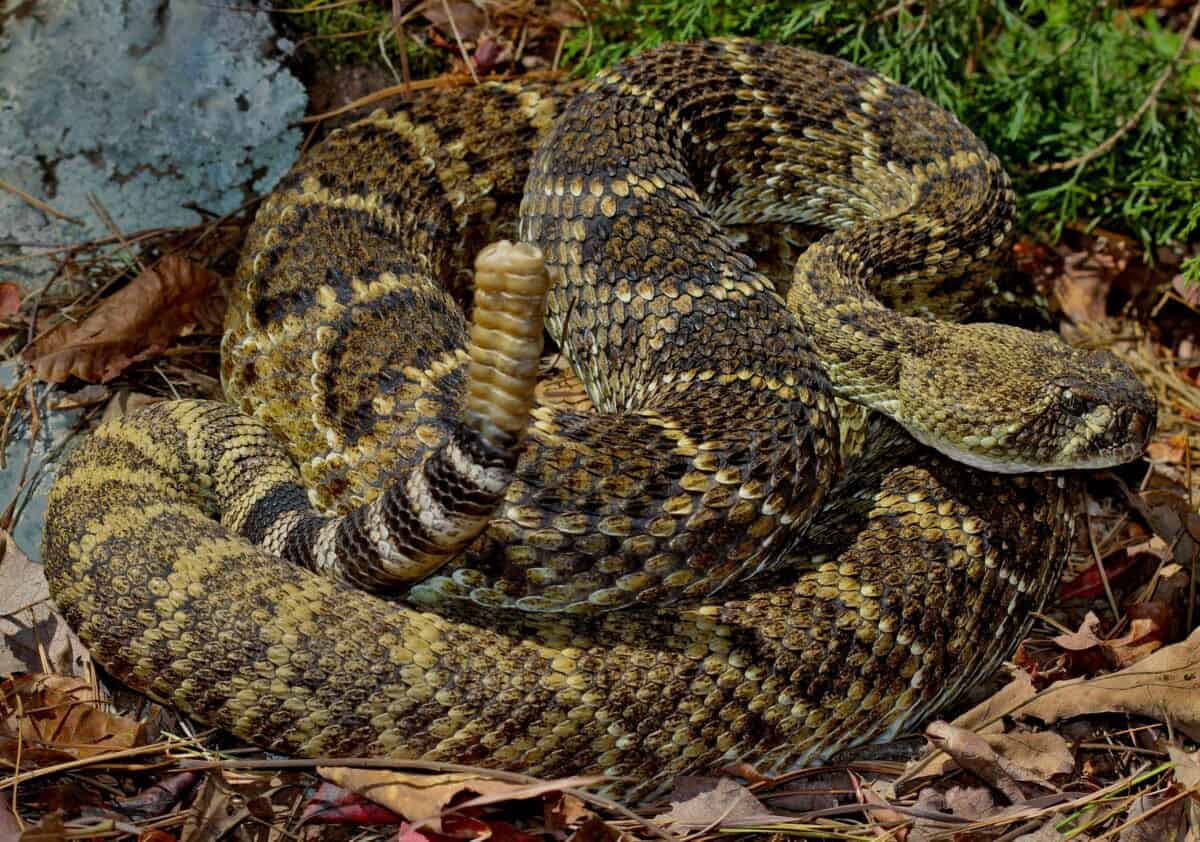
The Eastern Diamondback rattlesnake is more than just a symbol of the American Southeast—it’s a masterfully evolved predator with a rich ecological role and a suite of fascinating adaptations. From its bold diamond pattern and heat-sensing pits to its powerful venom and signature rattle, this species exemplifies nature’s precision and purpose. Despite being North America’s largest venomous snake, it’s shy by nature and prefers to avoid confrontation, relying on camouflage and warning signals before striking.
These 14 facts reveal just how much there is to admire—and respect—about the Eastern Diamondback. As human development continues to shrink its habitat, encounters become more frequent, making awareness and education more vital than ever. By understanding its behavior, importance in the ecosystem, and the challenges it faces, we can move beyond fear and toward coexistence. The Eastern Diamondback is not just a reptile to be cautious of, but a keystone species worth preserving and appreciating.
- 11 Signs a Rhino Is About to Charge - August 9, 2025
- 10 Common Chicken Behaviors and What They Mean - August 9, 2025
- 14 Creatures That Can Freeze and Thaw Back to Life - August 9, 2025

